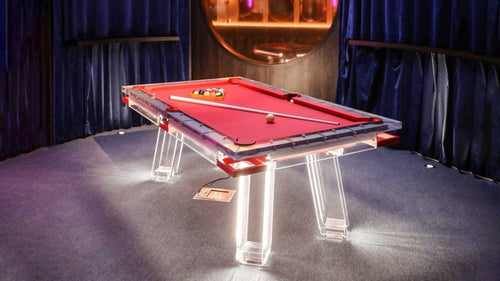Enjoy our modern designs
Want to dive into shuffleboard without wading through lengthy manuals or historical texts? You've come to the right place. This concise guide will get you up to speed on the essentials of shuffleboard—so you can start playing and winning right away.
What Is Shuffleboard?
Shuffleboard is a game that can be played indoors on a table or outdoors on a court. The objective is simple: slide your pucks or discs into the scoring zones at the opposite end while outmaneuvering your opponent with both offensive and defensive strategies.
Table Shuffleboard

- Surface: A long, narrow table with designated scoring areas at each end.
- Equipment: Small pucks that players slide by hand.
Floor Shuffleboard

- Surface: A marked court featuring scoring zones.
- Equipment: Discs that are pushed using a cue stick.
How to Play: Rules and Gameplay
Starting the Game
- Decide Who Goes First: Use a coin toss or any fair method.
- Players: Can be played individually or in teams.
Objective
-
Score Points: Slide your pucks or discs into the highest scoring zones without them going off the playfield.
Taking Turns
- Alternate Shots: Players take turns sliding one puck or disc at a time.
Scoring
- Point System: Only the player or team with the furthest puck or disc in the scoring zone earns points for that round.
- Counting Points: All leading pucks or discs from that player or team are counted.
Winning the Game
- Set Point Goal: Games are typically played to 15, 21, or even up to 75 points, depending on the variation.
Essential Strategies
Blocking
- Defensive Play: Position your pucks or discs to block your opponent from accessing high-scoring areas.
Knocking
- Offensive Play: Use your turn to knock your opponent's pucks or discs out of scoring positions.
The Hammer
- Last Shot Advantage: The final shot of a round, known as "the hammer," can be a game-changer. Use it to alter the score dramatically or to secure a strategic position.
Tips for Getting Started
Master Control
- Practice Makes Perfect: Focus on controlling the strength and direction of your slides for better precision.
Think Ahead
- Strategic Placement: Plan your moves not just to score but also to hinder your opponent's chances.
Learn from Each Game
- Continuous Improvement: Pay attention to what works and what doesn't. Use each game as a learning opportunity.
Taking It to the Next Level

As you become more comfortable with the game, consider joining a local shuffleboard club or participating in tournaments. While clubs might be hard to find, tournaments offer a great platform to challenge yourself and improve your skills. Observing experienced players and learning advanced techniques can significantly enhance your gameplay.
Ready to hit the playfield? With these basics under your belt, you're well on your way to enjoying and excelling at shuffleboard. Grab your pucks or discs, and let the games begin!

















